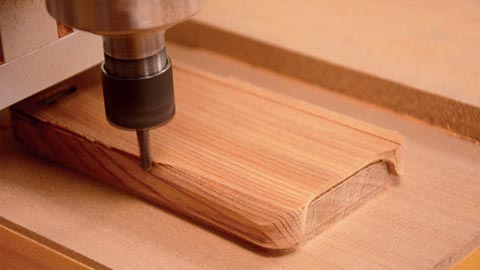Integrated design-through-manufacturing system delivers a custom wooden cell phone case in just three hours; also opens door to new markets
Integrated design-through-manufacturing system delivers a custom wooden cell phone case in just three hours; also opens door to new markets

Case Study
Integrated design-through-manufacturing system delivers a custom wooden cell phone case in just three hours; also opens door to new markets
Wkidea
Using Solid Edge and CAM Express, craftsman singlehandedly runs the entire process from 3D design through to CNC machining
Cell phone cases with a difference
In a market dominated by plastic, wooden cell phone cases have a unique charm, with fascinating textures, warm touches and natural wood fragrance. Wkidea specializes in wooden cell phone cases, and has sold more than 2,000 from its online store in only three years. The cases are made from a variety of woods that are native to Taiwan or imported, including Taiwan Mengzong Bamboo, Taiwan Cypress, Calocedrus Formosana (Taiwan Incense Cedar), Green Sandalwood (Baile San Tan) and Africa Ebony. Although the company’s products fall into the middle-to-high end of the price range, they have attracted an enthusiastic group of consumers.
Shih-Min Kang, the founder of Wkidea, initially designed the cases himself and outsourced production. Outsourcing often led to unfinished products and unsatisfactory yield rates, however. Sometimes the technicians just couldn’t put a design into production even though they fully understood it. To eliminate this problem and better control quality, Shih-Min Kang decided to invest in his own product lifecycle management (PLM) software and machine tools to be able to handle production in-house.
First stop, Siemens Digital Industries Software partner CADEX
Shih-Min Kang consulted Siemens Digital Industries Software partner CADEX Technology Co., Ltd., and on its recommendation decided to implement an integrated computer-aided design (CAD)/computer-aided manufacturing (CAM) solution consisting of Solid Edge® software for design and CAM Express software for CAM. Shih-Min Kang also purchased a computer numerical control (CNC) machine.
With CADEX’s assistance, Shih-Min Kang quickly learned how to operate the software and write macros to capture best practices, such as which machine tool is best for each type of wood. Within about two weeks, he was able to generate NC codes using CAM Express, which he runs along with Solid Edge on his notebook computer.
The codes are then transferred to the CNC machine, which carves the cases one-by-one out of pieces of wood. “Cell phone cases are a good use for leftover bits and pieces of wood,” Shin-Min Kang notes. “What’s more, even a piece of seemingly defective wood holds a great appeal to consumers because of its unique texture and fragrance.”
Shih-Min Kang speaks highly of the intuitive interface of Solid Edge, which allows him to implement a design concept based on subtraction, and easily manipulate surfaces. “When creating a surface on a model, I cut out all of the unwanted parts,” Shih-Min Kang explains. “Sometimes I make components first before assembling. All of the drafting tasks can easily be done in Solid Edge, which has been a great spur to improving my productivity.”
